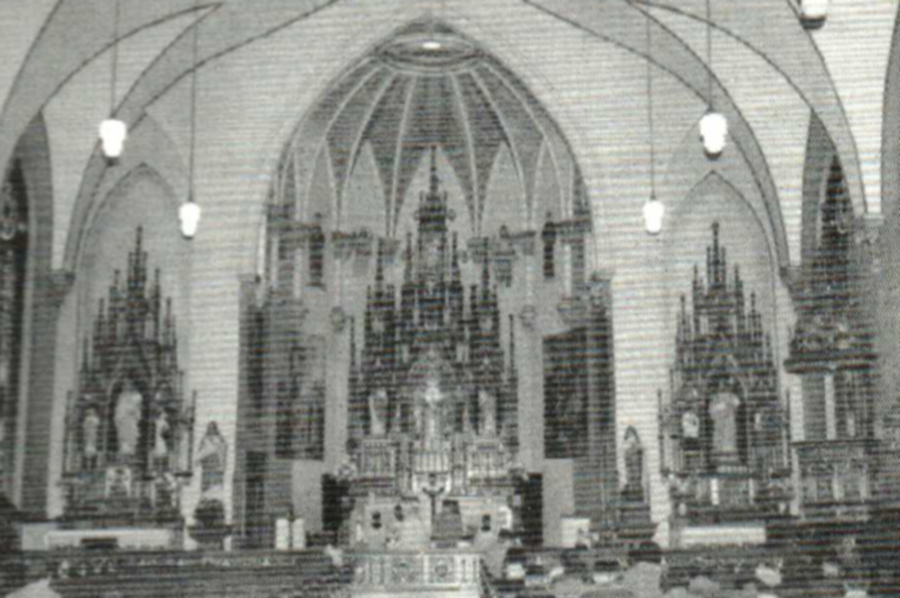Marshfield, October 1905

By Kris Leonhardt
Featured Columnist
In early October of 1905, a congregation of faithful followers was installing a new “high” altar in St. John’s Church, an already monumental place of worship. The steadfast assemblage, then celebrating their 25th year as a parish, marveled at all that they had created since their beginnings in hardship.
A group of meager means, and small in numbers, began meeting in private homes in 1874 while sharing a priest with the cities of Wisconsin Rapids, Stevens Point, Medford, and Menasha. Three years later the Diocese granted permission to build a church in the city of Marshfield, and the first church, a 40- by 80-foot structure, would appear on the horizon.
The congregation continued to grow, and within 10 years they spawned a grand plan to build a new structure, one with grace and beauty that would reflect the devotion and admiration they held for their creator.
Leading the effort was a man of “tact, diplomacy, and resourcefulness,” a man that would be capable of undertaking and succeeding in a project of this magnitude, newly-installed priest Father John Eisen. When Father Eisen and his fellow solicitors took to petitioning the church members for funds, the group was met with a resoundingly positive response, and within months plans were ordered.
The path to construction would not be easy, but the leadership of Father Eisen would provide a constant source of unwavering assurance that he would carry to project through to fruition.
In the fall of 1892, work began on the grand structure, but yet again the congregation would suffer a setback when severe winter weather halted construction from November through April of the following year.
The cornerstone was finally laid on May 21, 1893. Corresponding with the Catholic holiday of Pentecost, it somehow signaled a new beginning. Eight months later the church was dedicated by Bishop Schwebach as attendees spilled out into the street.
In October of 1905, the church celebrated its Silver Jubilee. As Father Eisen stood before the church at the 10 o’clock mass, he blessed the new altar brought in to mark the occasion. St. John’s members and guests marveled at the 150 incandescent lamps that were lit within it to mark the special occasion.
The magnificent church, created in traditional gothic using stone, brick, and wood, now situated high among the landscape of the city, would be a beacon to all that would enter its view.
As he stood before the congregation, having installed the final glorious piece to the already stunning church, the steadfast priest was beginning to experience the effects of his weakened heart. As doctors begged him to rest, the dedicated, larger than life man placed his congregation first. Following treatment in Oshkosh, Father Eisen returned to his congregation.
The German-born priest would succumb to his illness less than two years after that glorious day, leaving behind a magnificent church, school, and rectory, as well as a group of grateful parishioners.
Today the church remains a towering presence that welcomes all to the city as the high altar continues to welcome its faithful followers to receive what is promised them, all a work of beauty and a testament to the strength and dedication of a priest and his pioneering congregation.
Leave a reply
You must be logged in to post a comment.






